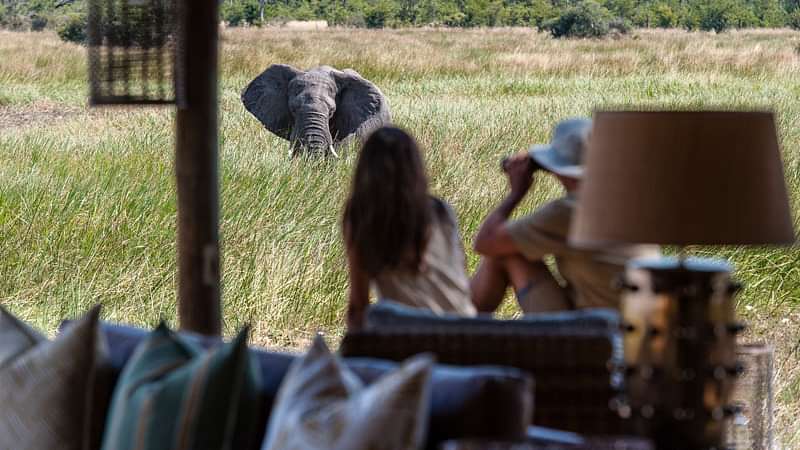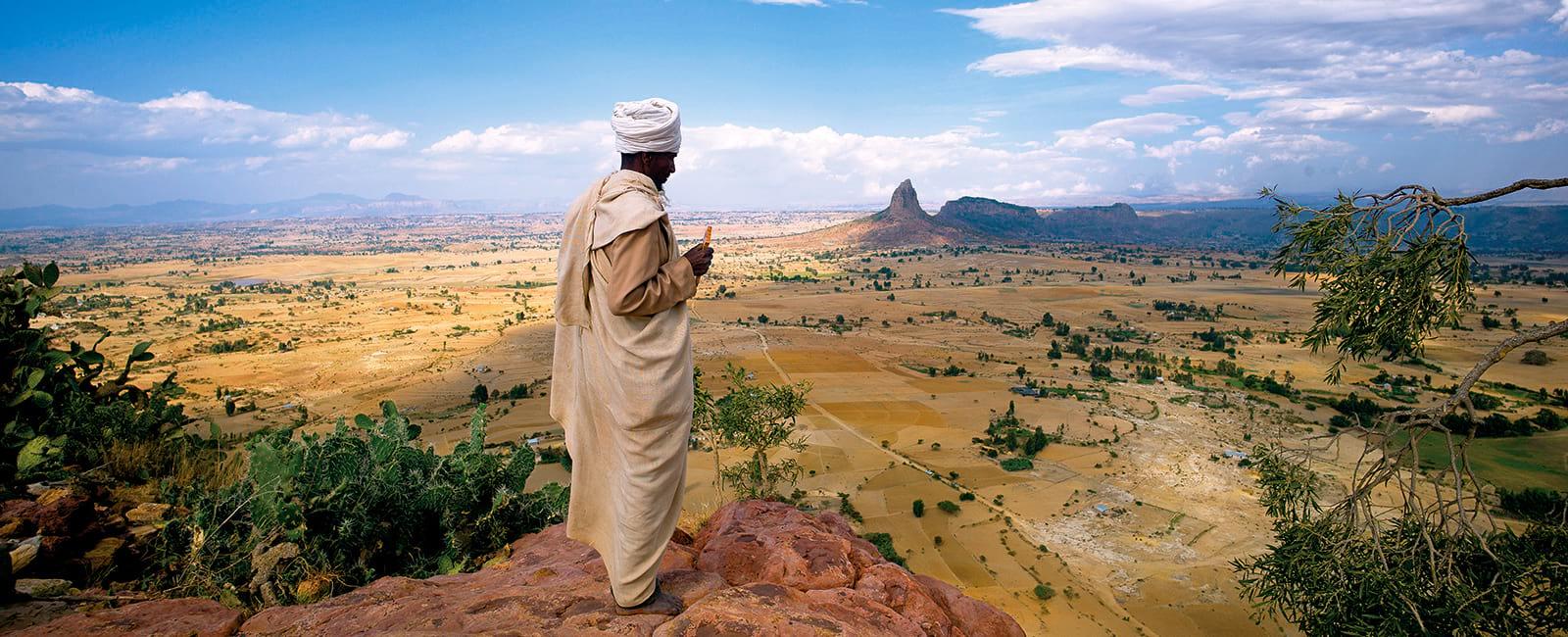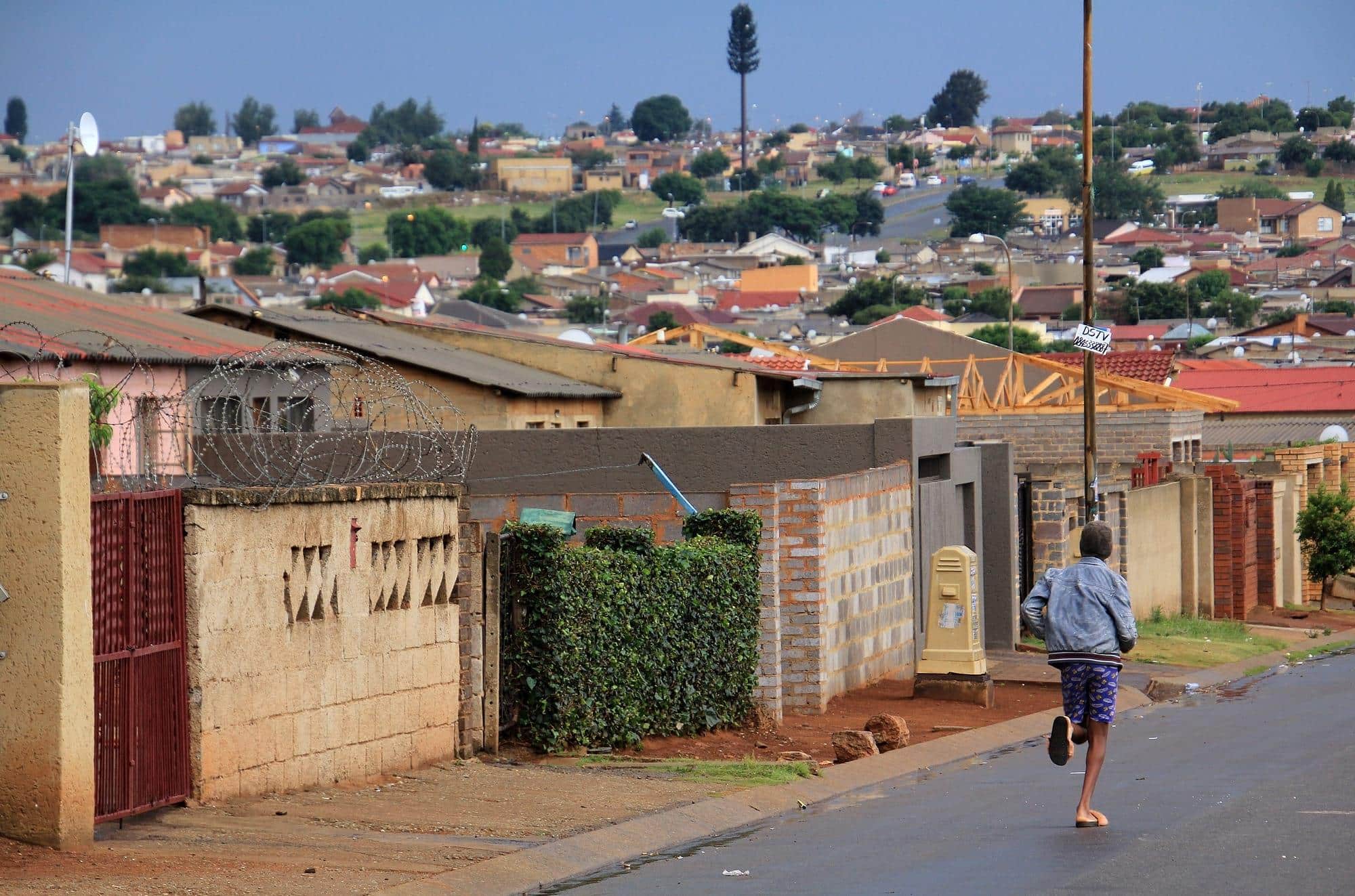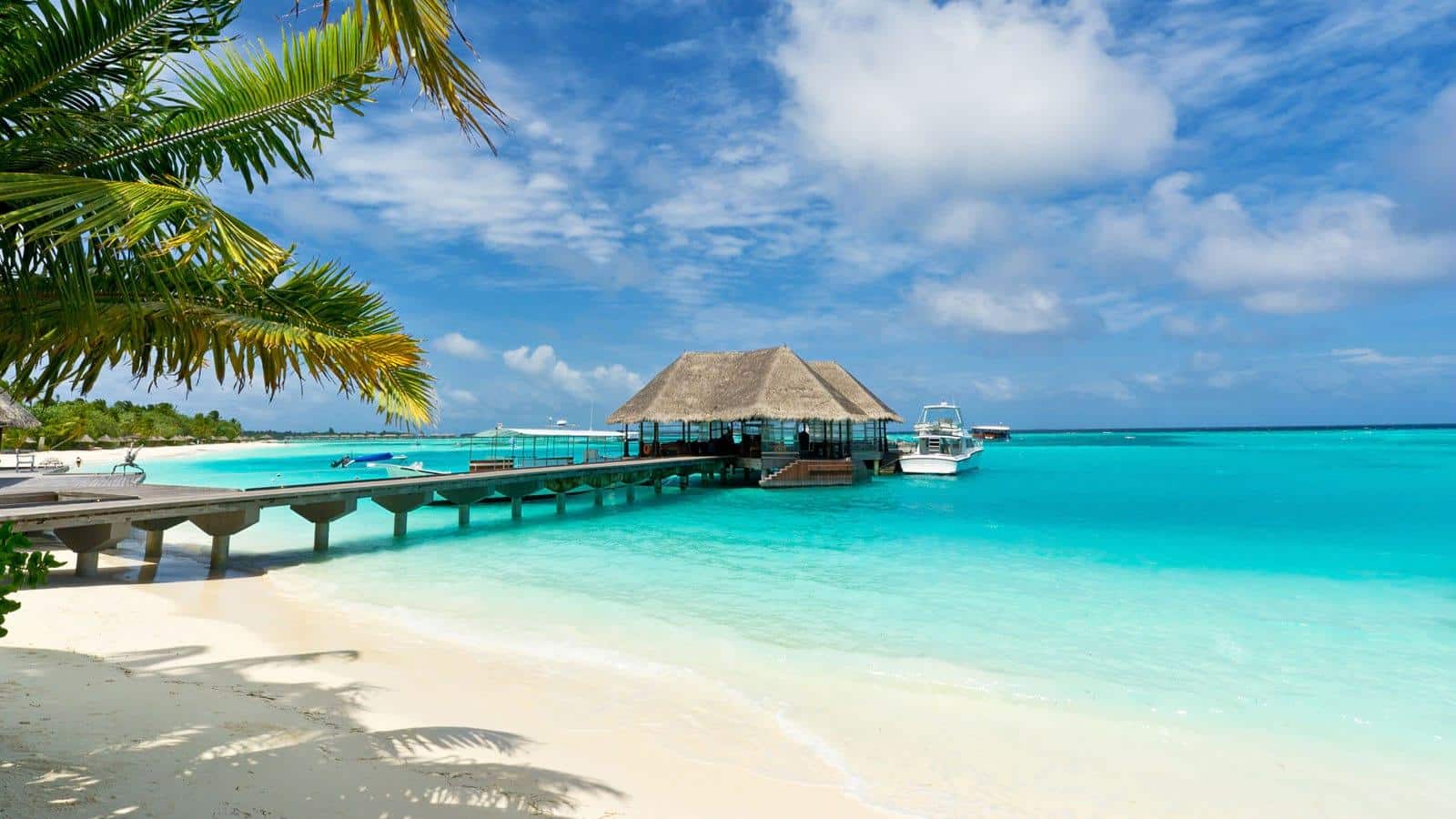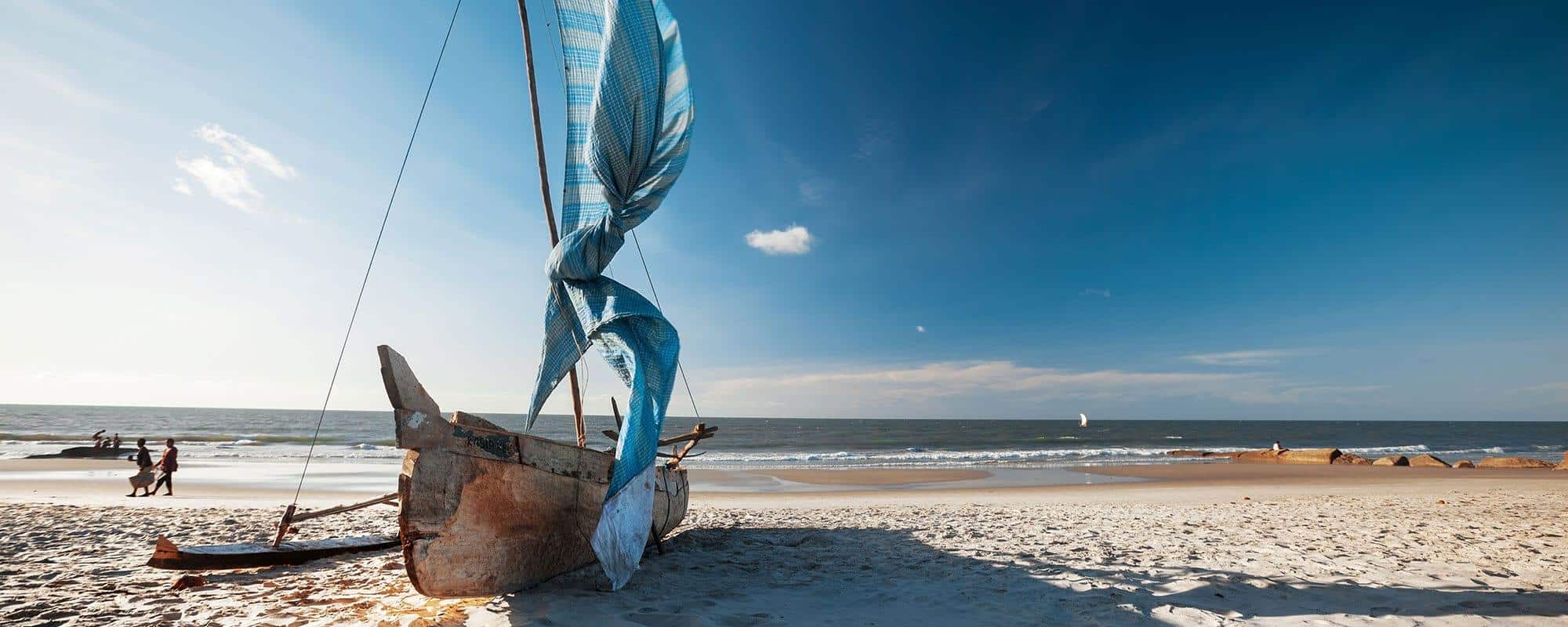44 Amazing South African Facts
Pangea existed during the late Palaeozoic and early Mesozoic eras, centred on the Equator, and surrounded by the super ocean Panthalassa.
But where would South Africa fit into this, exactly? In a Pangea-world, South Africa fit comfortably between Chile and Argentina, with the African continent right at the centre of the supercontinent, right at the very heart of it all.
When taken back to the present, some odd 335 million years later, and with the continents in their ‘proper’ places, Africa is still at the heart of it all as the second largest and second most populous continent in the world.
The landmass of Africa is made up of 54 countries with two states whose independence is disputed: Western Sahara and Somaliland.
Africa is known and dearly loved for its unmatched beauty, diversity, people, culture, wildlife, cuisine, breath-taking views, and so much more, and South Africa in itself is one of the most unique countries that offers a variety of things to its inhabitants and tourists.
“Saffa”. This may be a term that some people are familiar with, but for those who have never heard it before, it is, according to the Urban Dictionary, the name for a person from South Africa and by no means is it meant as a derogatory term.
South African people form a part of a unique, diverse, and colourful population where almost every province, city, and town have their own traditions, habits, and cultures.
Stepping across the invisible barriers between provinces may generate the feeling of being in another world. South Africans are known to have deep roots in ethnic and cultural diversity that they are quite protective of.
It is, after all, a typical “Saffa” thing that only the inhabitants of this colourful, culture-rich country would understand, and which is highly sought-after by the millions of tourists who flock to the country on an annual basis.
When considering this, it is imperative to cover some facts regarding South Africa, albeit reasons, that make this country one of the most colourful and diverse countries in the 6371km radius of planetary space that humans occupy in our solar system.
1. South Africa has the longest continuous wine route on Earth
Route 62, which is 850 kilometres long, is believed to be the longest wine route in the world. It can be found between Cape Town and Port Elizabeth which connect the east and the wester coasts of the country.
Route 62 passes through both the Cape Winelands and the Klein Karoo and it is believed to be a shorter and more scenic alternative than driving along the N2 highway along with being less commercial than the famous Garden Route.
The route can easily be traversed in around two days, although a self-drive trip to truly appreciate the wondrous route is recommended and can last between 5 to ten days with stops in scenic towns such as Paarl, Worcester, Montagu, Calitzburg, and Outdtshoorn.
2. Some of the oldest mountains in the world are found in South Africa
Of nine of the oldest mountain ranges in the world, four of them can be found in South Africa, with the very oldest in Barberton, Mpumalanga.
The Makhonjwa Mountains, or Barberton Greenstone Belt, are considered to be the very oldest mountains in the world. It is also referred to as the “Genesis of Life”, as geologists has proven that the first life forms on earth can be found in these mountains. It is estimated to be 3.5 billion years old and have a peak of approximately 1,798.32 metres.
The Waterberg Mountains are third on the list and are an estimated 2.7 billion years old. Located in the Limpopo Province in South Africa, these mountains have a peak of around 1,828.8 metres.
Magaliesberg, which is fourth on the list and is in the Northwest Province, is 2.4 billion years old and its highest peak is 1,852 meters.
Mount Pilanesberg, eighth on the list, can be found in the Witwatersrand Range in the Northwest Province and is around 1.2 Billion years old. Its highest peak is 5,535 ft. or 1,687.068 metres.
3. South Africa has some of the fastest mammals on Earth
Of the fastest animals in the world, South Africa is home to four namely:
- Cheetah – which is the fastest mammal on earth which can reach speeds of between 109 to 120 kilometres per hour. Although not built for endurance, but for speed, they tend to run in short bursts of 60 seconds.
- Springbok – as number three on the list, the Springbok reaches speeds of up to 88 kilometres per hour.
- Wildebeest – this mammal can reach speeds of 80 kilometres per hour despite their brutish, bulky appearance and size.
- The African Lion – one of the seven Wild Cat species in Africa, can reach speeds of up to 80 kilometres.
4. South Africa has one of the largest man-made forests in the World
Johannesburg, or referred to either as “Jozi” or “The City of Gold”, is the largest city in South Africa and one of the largest urban areas in the world.
The city of Johannesburg is home to around 6 million trees that puts it on the list as one of the largest urban forests in the world, although many of the trees found here are not indigenous and have been planted over the years.
There are around 1.2 million trees found in parks and along pavements and another 4.8 million trees which can be found in private gardens.
5. Although it is only the third largest in the world, the Blyde River Canyon is believed to be the largest “Green” one on Earth
This breath-taking natural feature is in the Motlatse Canyon Nature Reserve in Mpumalanga, South Africa. It cuts through the Drakensberg Mountain Range and the reserve offers over 1,000 species of flora and several stunning waterfalls.
Consisting mostly of red sandstone, the canyon’s highest point is 1,944 metres above sea level and the nature reserves spans across 29,000 hectares.
The area alone is around 26 kilometres in length and between 750 and 800 metres deep. It has earned the name as the largest ‘green’ canyon due to the lush subtropical foliage and its deep precipitous cliffs, which cannot be found anywhere on Earth.
It is third only to the Grand Canyon in the United States of America and the Fish River Canyon in Namibia.
6. Rooibos (Redbush) tea can only be found in the Cederburg, Western Cape
Aspalathus linearis, or more commonly known as Rooibos, is a member of the Fabaceae plant family closely resembling a broom. It grows in South Africa’s fynbos in the Western Cape and is used to make herbal tea.
To make tea, the leaves are subjected to an oxidation, or fermentation, process which produces the reddish-brown colour for which the tea is distinctively known. This process also provides the tea with its distinctive and enhanced flavour.
The name “Rooibos” is known to many South Africans, despite the language in which it is being referred to, while it is also referred to as “Bush Tea”, “Red Tea”, or Redbush Tea, and even “Rooibosch” by the Dutch, for ‘Red Bush’.
7. Most of the Macadamia nuts in the world come from South Africa
Macadamia nut production had already been established in South Africa in 1915 and commercial production had been established by the 1960’s with South Africa having turned into the main competitor for the title of the world’s largest producer.
According to SAMAC, the South African Macadamia Grower’s Association, there are over 700 Macadamia nut producers within the borders of South Africa.
The production of Macadamia nuts in South Africa increases by around 4,000 Hectares a year and they are mostly grown in the Limpopo region due to its favourable tropical climate.
Despite this, the global Macadamia nut industry only makes up for around 1% of tree nut volume in the world and due to this, South Africa stands to gain the most from any expansion in the industry.
8. South Africa is three times larger than Texas, and five times larger than Japan
South Africa is approximately 1,219,090 Sq. kilometres compared to Texas at 678,052 Sq. kilometres and Japan, at 377,915 Sq. kilometres.
9. Lesotho is completely landlocked by South Africa
The Kingdom of Lesotho is just over 30,000 Sq. kilometres and is the only country apart from the Italian peninsula which is not considered a microstate. Lesotho is land-locked by three South African provinces namely the Free State, KwaZulu-Natal, and the Eastern Cape.
Lesotho had previously been the British Crown Colony of Basutoland until it declared independence from the United Kingdom in 1966 after which it became a fully sovereign state and a member of the following:
- The United Nations
- The Commonwealth of Nations
- The African Union, and
- The South African Development Community, or SADC.
10. South Africa is one of the homes to the tallest animal in the world
Giraffes are native to several African countries, including South Africa. Giraffes are the tallest animals in the world, with males growing up to 5.5 metres tall and females to 4.3 metres.
Giraffe calves are born at approximately 1.8 metres tall and can grow up to 2.54 centimetres a day. Giraffes reach maturity at around 3 to 4 years old.
11. The smallest known mammal in the world can be found in several locations, including South Africa
Suncus infinitesimus, or the Least Dwarf Shrew, is a mammal which is part of the Soricidae family which weighs approximately 1.8 grams with a body measuring between 3 to 5 centimetres with its tail of between 2 to 3 centimetres excluded.
The Dwarf Shrew changes its fur according to the season to help it hide from predators. In summer, the Dwarf Shrew has brown to olive brown fur on its dorsal side with the colour extending down its sides, merging with smoke grey fur on its stomach.
During this time, its tail is bicolored, a mixture of dark fur on the top of its tail and beige fur underneath.
During the wintertime, its fur becomes lighter and greyer, more noticeably on its back, which allows it to blend into its surrounding more efficiently.
12. No less than ten World Heritage Sites are in South Africa
Of the 890 World Heritage Sites, South Africa features five cultural, four natural, and one mixed World Heritage sites. The sites that are in South Africa, according to their dates of recognition, include:
- Fossil Hominid Sites of South Africa, 1999 and 2005.
- Robben Island, 1999.
- iSimangaliso Wetland Park, 1999.
- Mapungubwe Cultural Landscape, 2003.
- Vredefort Dome, 2005.
- Richtersveld Cultural and Botanical Landscape, 2007.
- Maloti-Drakensberg Park, 2000 and 2013.
- Cape Floral Region Protected Areas, 2004, 2015.
- ǂKhomani Cultural Landscape, 2017.
- Barberton Makhonjwa Mountains, 2018.
13. A fifth of the world’s gold is produced by gold mines in South Africa
Alongside China, Australia, Russia, the United States, Canada, and numerous other countries, South Africa is one of the largest producers of gold on a global scale with a reported 90,000.000 kg in December 2019.
The average production between 1990 until 2019, with 30 observations, averaged 315,947.000 kilogram with a surge occurring in February 2020 where gold output had risen by 24.9% when compared to 2019.
14. The largest bird in the world can be found in South Africa
Struthio camelus, in the order Struthioformes, is a variety of bird whose members are the Ostriches. There are around 8,600 bird species that exist today, of which Ostriches are the largest.
Reaching an approximate height of 2.6 metres and weighing around 135 kilograms, Ostriches are flightless birds, but they are some of the fastest on land.
During mating season, which occurs from March through September, pairs often merge into herds and while females only mate with one male, a male may mate with several females.
15. There are numerous inventions that originated in South Africa
Some of the most useful inventions that form part of everyday life were invented in South Africa including, but not limited to:
- The CAT Scan
- Kreepy Krauly
- Pratley’s Putty
- Dolosse
- Q20
- The Retinal Cryoprobe
- The Speed Gun
- The Smartlock Safety Syringe, and more.
16. Some of the oldest human remains were discovered in South Africa
The most complete hominin skeleton ever found in South Africa called “Little Foot”, named this as the discovery started with four small footbones, was found in 2017 in Sterkfontein close to Johannesburg, and she is an estimated 3.67 million years old.
It took 20 years of slow and careful excavation before “Little Foot” was unveiled and it is one of the most remarkable fossil discoveries ever made in the history of human origins research, providing valuable information regarding Australopithecus.
Information which can be derived include the way our ancestors moved, how they were put together, and what they looked like along with the type of environment that they lived in based on isotope analysis of the fossilised tooth enamel of “Little Foot”.
17. South Africa is the only country, other than England, to have played host to the Rugby, Soccer, and Cricket World Cups
South Africa hosted the Rugby World Cup in 1995, the Cricket World Cup in 2003 (Co-hosted by Zimbabwe and Kenya), and the Soccer world cup in 2010.
18. South Africa features record-breaking animals
South Africa is home to impressive animals namely:
- The largest mammal, the Elephant.
- The largest bird, the Ostrich.
- The tallest animal, the Giraffe.
- The largest fish, the Whale Shark.
- The largest reptile, the Leatherback Turtle.
- The fastest land mammal, the Cheetah, and
- The largest antelope, the Eland.
19. Of the 6 floral kingdoms on the planet, South Africa is home to one of them
The Cape Kingdom or Cape Floristic Region is in the Southern tip of South Africa and is one of the smallest recognised floral kingdoms of the world with over 9,000 vascular plant species of which 69 percent are endemic.
The Cape Floristic Region possesses both economic and intrinsic biological value as it is considered a biodiversity hotspot in South Africa as home to the greatest concentration of higher plant species in the world that is considered non-tropical.
Most of the Cape Floristic Region is covered with fynbos which is a sclerophyllous shrubland which occurs particularly on either acid sands or nutrient-poor soils which are derived from the Table Mountain sandstones.
The Cape Floristic Region is divided into three distinctive ecoregions namely:
- The Lowland fynbos and renosterveld
- Montane fynbos and renosterveld, and
- The Albany thickets.
20. South Africa is one of the countries with the most official languages
South Africa has thirty-five languages of which 11 are recognised as official languages namely (in alphabetical order) Afrikaans, English, Sepedi, Sesotho, Southern Ndebele, Swazi, Tsonga, Tswana, Venda, Xhosa, and Zulu.
Provided that South African Sign Language is officiated, it would bring the number up to 12 for South Africa, which keeps South Africa in third place after Zimbabwe with 16, and India with 22 official languages.
21. South Africa has the deepest mine in the World
Six of the ten deepest mines in the world are in South Africa, with the deepest being the Mponeng Gold Mine, south-west of Johannesburg, with a depth of between 3.16 to 3.84 kilometres at the end of 2018, with plans to extend it further to 4.27km.
The other five mines on the list include:
- The Driefontein Mine which is owned by Sibanye-Stillwater, located near Carletonville in Gauteng with a depth of 3.42 kilometres.
- Kusasalethu Gold Mine – located 75 kilometres west of Johannesburg on the West Wits Line near Carletonville, Gauteng with a depth of 3.38 kilometres.
- Moab Khotsong Gold Mine which is located near the Vaal River in South Africa has a mining depth ranging between 2.6 and 3.052 kilometres.
- South Deep Gold Mine, which is both owned and operated by Gold Fields, is the seventh deepest mine in the world and extends up to 2.9 kilometres below the surface.
- Kopanang Gold Mine is in the Vaal River Region in the Free State, South Africa. The depths of this mine range from between 1.3 to 2.2 kilometres.
22. There are 11 South Africans who have won the Nobel Prize
These Nobel Prize winners include:
- Max Theiler, Physiology or Medicine – 1951.
- Albert Lutuli, Peace – 1960.
- Allan M. Cormack, Physiology or Medicine – 1979.
- Aaron Klug, Chemistry – 1982.
- Desmond Tutu, Peace – 1984.
- Nadine Gordimer, Literature – 1991.
- Nelson Mandela and F.W. de Klerk – 1993.
- Sydney Brenner, Physiology or Medicine – 2002.
- John Maxwell Coetzee, Literature – 2003, and
- Michael Levitt, Chemistry – 2013.
Another interesting fact regarding this, is that both Nelson Mandela and Archbishop Tutu lived on Vilakazi Street in Soweto.
23. Some of the oldest dinosaur fossils were discovered in South Africa
Dinosaur fossils found in the Eastern Cape, more specifically in the Qhemega area, has yielded hundreds of fossils from around 12 different herbivorous dinosaur species which have been identified in the area.
These fossils date as far back as 200 million years and the site where they were found, cover a 20-kilometre radius with the potential of yielding more fossils with excavations set to continue in 2021.
24. The largest succulent is found in South Africa
Adansonia digitata, otherwise known as the Baobab tree, which can be found in areas of South Africa, Botswana, Namibia, Mozambique, and other tropical African countries.
The Baobab is the largest succulent in the world with enormous proportions. The Baobab can range in height from 5 to 20 metres and carbon dating suggests that they can live to be around 3,000 years old.
An ancient and hollow Baobab tree in Zimbabwe is so large, that 40 people can easily take shelter in its trunk. Baobab trees, due to their sheer size have served numerous purposes as either shops, prisons, houses, storage barns, bus shelters, and more.
25. There are more than 2,000 shipwrecks in the ocean off the South African coastline
Along its coastline of around 2,500 kilometres, there has been more than 2,500 shipwrecks which have occurred along the South African coast since the 1500s originating from numerous cultures and countries.
The Cape of Good Hope in the Western Cape is notoriously known as the “graveyard of ships” along with being called the “Cape of Storms”, with the Wild Coast in the Eastern Cape also well known for numerous shipwrecks.
26. The first human heart transplant was performed in South Africa
The first heart transplant in an experimental model had been performed by Alexis Carrel, a French surgeon, in 1905, and the first successful heart transplant in a dog in 1985 by Norman Shumway, an American surgeon.
South Africa holds the title for the first successful human heart transplant performed by Christiaan Barnard in 1967.
27. South Africa is an important centre of human evolution
South Africa features rich and complete fossil record that has made it a prime laboratory where the origin of species through time, especially that of human origins, can be studied.
Some of the most important fossil hominid sites in the world is owned by the University of the Witwatersrand in Johannesburg.
South Africa features a rich geological, palaeontological, paleoanthropological, and archaeological record which covers a substantial time-period from the origins of life up until recent times.
28. The largest diamond in the world was discovered in South Africa
The Cullinan Diamond, which weighs 3,106.75 carats or 621.35 grams, is the largest gem-quality rough diamond, which was ever found in Cullinan, South Africa, in 1905, and was named after the mine’s chairman, Thomas Cullinan.
29. Some world-famous authors were born in South Africa
There are numerous world-famous authors, but what a lot of people may not know, is that there are numerous who were born on South African soil such as:
- J.R.R. Tolkien
- Lauren Campbell
- Bryce Courtenay
- Lawrence Anthony
- Roy Campbell
- Antjie Krog
- Madeleine Masson
- Ingrid Jonker
- J.M. Coetzee, and numerous more.
30. South Africa is one of the topmost wine producers in the World
South African wine production dates back as far as 1659 with the first bottle which was produced in Cape Town by its founder, Jan van Riebeeck.
In 2019, South Africa was eighth on the list of countries that produced the most wine with a volume of 9,700 hectolitres.
31. South Africa has the second-highest waterfall in the world
The Tugela Falls, located in KwaZulu-Natal, is the second-highest waterfall in the world with a height of 948 metres, second to the Angel Falls in Canaima National Park in Bolivar with a height of 979 metres.
32. South Africa is home to the longest river in Africa, the Orange River
At 2,200 kilometres long, the Orange River is the longest in South Africa, and in Africa. It rises in the Lesotho Highlands from the Indian Ocean and flows to the Atlantic Ocean in a westerly direction.
33. South Africa is known as “The Cradle of Humankind”
Located approximately 50 kilometres northwest of Johannesburg, Gauteng, the self-proclaimed paleoanthropological site, the “Cradle of Humankind”, was declared a World Heritage Site by UNESCO in 1999.
The site contains a complex of limestone caves and it is officially registered as the “Fossil Hominid Sites of South Africa”.
There have been numerous discoveries in this site in the past few decades, including that of the juvenile Australopithecus Africanus skull known as “Taung Child” in 1924, and a 2.3 million-year-old fossil “Australopithecus Africanus” nicknamed “Mrs. Ples” in 1947.
These discoveries have also been attributed to early Homo and Paranthropus alongside Australopithecus.
34. South Africa features impressive rock and cave Paintings
Some of South Africa’s most impressive rock and cave painting sites include:
- Bushman’s Kloof in Cederberg, Western Cape.
- Kamberg Rock Art Centre, KwaZulu-Natal.
- ClanWilliam Living Landscape Project, Cederberg, Western Cape.
- Wildebeest Kuil Rock Art Centre, Northern Cape.
- Drakensberg Rock Art, KwaZulu-Natal, and more.
35. One of the highest commercial natural bungee jump locations in the world is found in South Africa
The Bloukrans Bridge Bungy, at 216 metres, is one of the highest commercial bridge bungy locations in the world and it is situated across the Bloukrans River.
It became the first bridge for bungee jumping in 1990. Operated by Face Adrenalin, the Bloukrans Bridge Bungy has been accident free since 1997.
The oldest person in the world, as per the Guinness World Records, to have bungy jumped from the Bloukrans Bridge was Mohr Keet, who took the jump in 2010 at the age of 96.
The world record for the most bungy jumps performed in a day was done by Scott Huntly who had jumped 107 times in nine hours in 2011. This was completed to raise funds for local communities.
36. The largest visible crater in the world is found in South Africa
The Vredefort Impact Crater located close to the Vaal River in South Africa is dated to 2.02 billion years and is approximately 305 kilometres wide.
Despite the ridge of the crater having worn away over time, the base of this formation remains, and it is alternatively also known as the Vredefort Dome, or the Vredefort Impact Structure.
Along with it being the largest in the world, it is also considered the oldest and it forms a crucial part of the geological history of Earth.
37. The fish migration in South Africa is so large, it can be seen from Outer Space
Between May and June every year, there is an annual event known as the Sardine Run and it features large shoals that are 15 kilometres long, 3.5 kilometres wide, and up to 40 metres deep.
This migration of fish from the cold waters off Cape Point in South Africa up to the coastlines of the northern Eastern Cape and southern KwaZulu-Natal is so large that satellite images of it have been previously captured.
38. South Africa was the first African Country and the fifth in the world to recognise same sex marriage
As the fifth country to legalise same-sex marriage, South Africa also became the first and only country in Africa as of May 2020 who legalised this.
The Civil Union Act came into force in 2006, after the Constitutional Court extended the common-law definition of marriage to include that of same-sex spouses in December 2005.
On 14 November 2006, a law was passed by the National Assembly which allowed same sex couples to legally solemnise their union. It was subsequently approved on 28 November by the National Council of Provinces, with the law in effect two days later.
39. The world’s largest timed cycle race was held in South Africa
The Cape Town Cycle Tour, hosted in Cape Town, South Africa, is the largest of its kind in the world with as many as 35,000 cyclists, and even more, taking part in this tour.
40. South Africa is the largest producer of platinum in the world
South Africa is the largest producer of platinum in the world, producing twice as much as any other country on Earth combined. The platinum production in South Africa makes up for 68.32% of the World’s platinum.
The three major South African platinum bearing areas are:
- The Merensky Reef which was first used for platinum mining in 1925 until the end of the 20th century.
- The UG2 Reef which opened in the 1970s subsequently became the major source of platinum in South Africa and it also accounted for most of the platinum which was mined in the country.
- The Platreef was only mined on a large scale from 1993 and it is currently the third largest platinum mine in South Africa.
41. South Africa is the only country in the world that built and dismantled its entire nuclear weapons programme
Research into weapons of mass destruction including that of nuclear, biological, and chemical were pursued from the 1960s to the 1990s with six nuclear weapons assembled by the time the African National Congress-led government took over in the 1990s.
Following this, all the nuclear weapons were dismantled, and South Africa was the first country in the world to have voluntarily given up all nuclear arms that it had developed itself.
These nuclear weapons are now safely locked away in a former silver vault at the Pelindaba Nuclear Research Centre close to the Hartbeespoort Dam.
42. One of the world’s most luxurious trains are found in South Africa
The Blue Train, named for its distinctive blue colour, connects two of the most important cities in South Africa namely Cape Town and Pretoria. This route covers approximately 1,660 kilometres and it is one of the most luxurious trains in the world.
The train features a butler service, two separate lounge cars which respectively cater for smokers and non-smokers, an observation car, fully carpeted sunroof compartments with their own ensuite, and more.
The completion of the route takes approximately 27-hours and considering that the Blue Train can easily be compared to a five-star hotel, passengers can expect to pay around ZAR 25, 820.00 in low season for per person sharing.
43. The Adams Calendar was found in South Africa
Controversially suggested to be the oldest man-made structure in the world, the Adams Calendar, or often referred to as “African Stonehenge” was found in Mpumalanga, South Africa.
The Calendar predates both Stonehenge as well as the Great Pyramid of Giza by tens of thousands of years and this structure, which is 30 metres in diameter has been estimated to be more than 75,000 years old.
In addition, there have been various astronomical alignments which have been identified at the site. It potentially serves as the only example of a completely functional and majorly intact megalithic stone calendar found in the world.
44. Stellenbosch University in South Africa was the first African University to develop and manufacture a microsatellite
SUNSAT is an advanced microsatellite program which was developed by post-graduate students at Stellenbosch University which was set to be launched by NASA in 1997 but was launched on a Delta-II vehicle in 1999 as a secondary payload.
The microsatellite which was developed and manufactured was a mere 45 x 45 x 62 cm big, weighed only 64 kilograms with 30 Watts of power obtained from body-mounted solar panels along with NiCd batteries which were rechargeable.
The overall objective of the project was to demonstrate both proven and new technologies in the fields pertaining to remote sensing, spacecraft control, solid Earth sciences along with providing services to the AMSAT community including:
- Mailbox
- Speech, and
- Data relay experiments.
Final Thoughts
South Africa may only be one of 195 countries in the world today, but it has unique features and a rich, diverse history from the very beginning of time that makes it one of the most loved tourism destinations in the world, along with being a great point for investment.
South Africa features historical sites, some of the best tourist destination, impressive wildlife, iconic people throughout history, and world-leading productions, and so much more.
It is no wonder that travellers from all over the world make their way to this beautiful country at some point in their lives and why it is heart-breaking for fellow “Saffa’s” when they relocate.
Once you have lived or visited South Africa, there is always a bit of the Rainbow-nation that will follow you wherever you may go.

